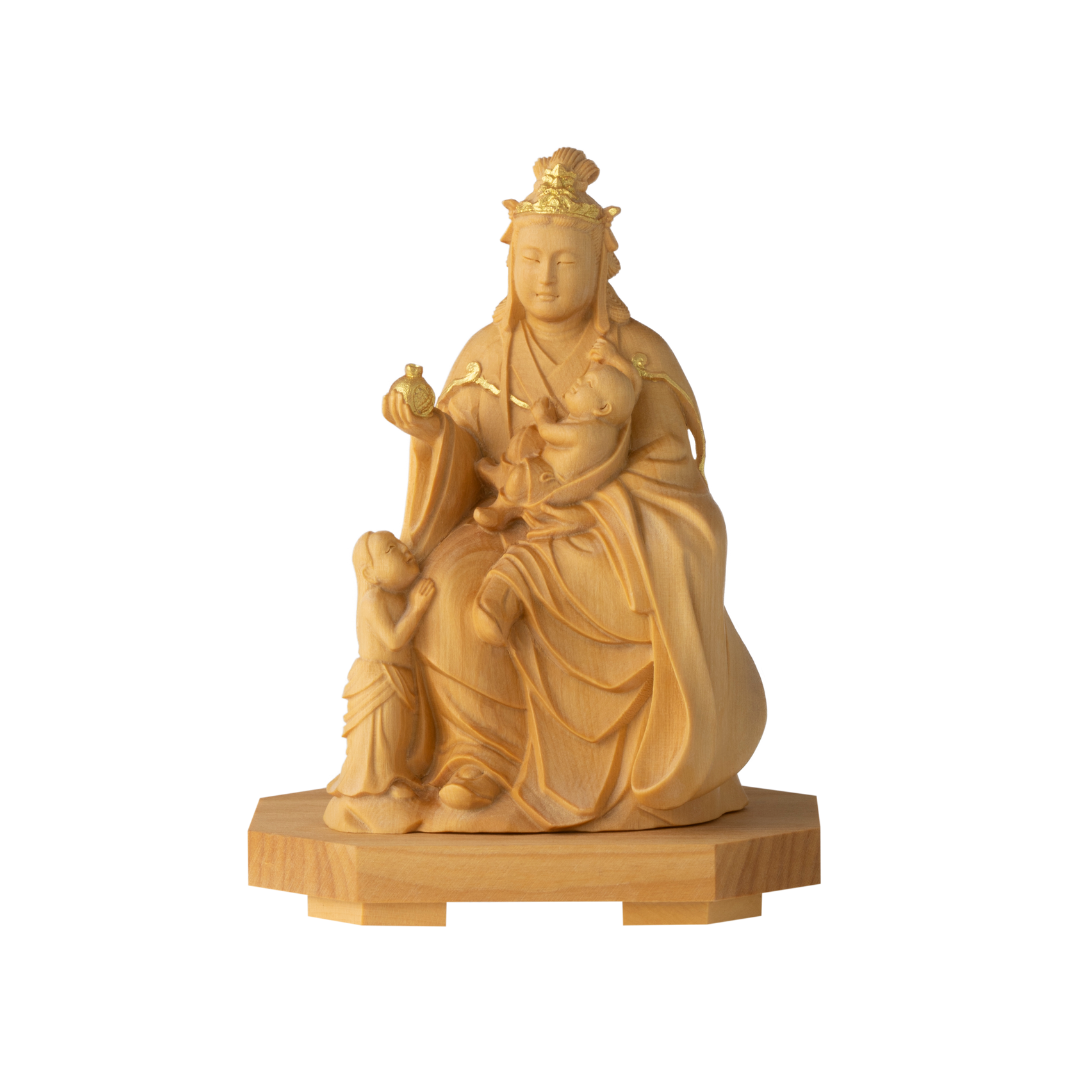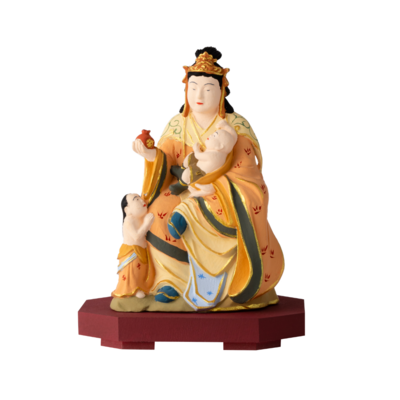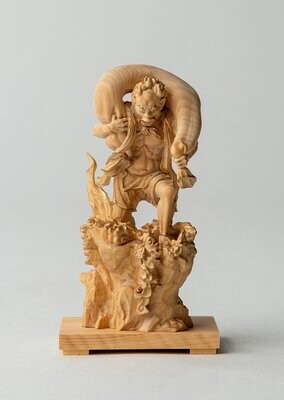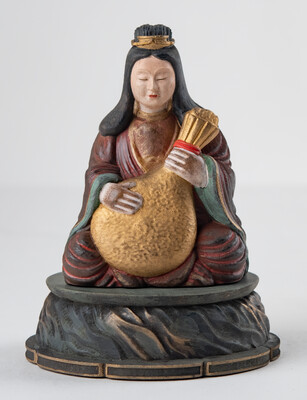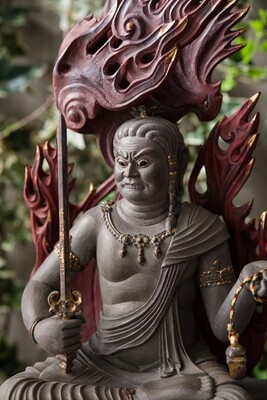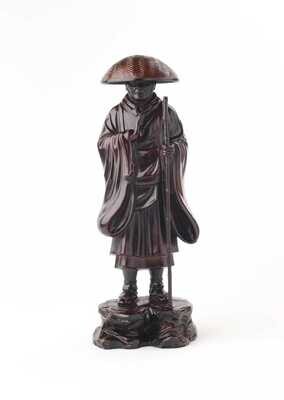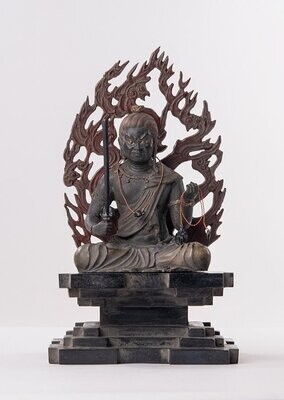Kishi Bojin (Kariteimo) (鬼子母神) (訶梨帝母)
Kishibojin, originally known as Kariteimo in India, was feared by people as a demon who captured and ate human children. Unable to bear this, the Buddha offered guidance to Kishibojin, and in order to gain enlightenment from her past sins, she swore to become a spirit to assist women in easy childbirth and in raising their children. As a result of this, Kishibojin grew to be revered and worshipped.
Kishibojin (鬼子母神) is a female deity worshiped in both Japanese Buddhism and folk beliefs. She is primarily known as a goddess of motherhood and childcare, and holds a significant place in Japan's religious landscape.
Kishibojin is often depicted with features resembling that of an oni, a type of demon or ogre in Japanese folklore. Her typical appearance includes a demon-like face with a pair of horns, and she is usually portrayed with multiple arms. In these arms, she may cradle or display various gestures of affection towards children. She is also often depicted wearing a red robe and is known for her wide-open mouth, which is believed to symbolize her protective and nurturing nature. This unique appearance underscores the belief that she harnesses the power of the oni for benevolent purposes.
The worship of Kishibojin is closely associated with matters related to the well-being and safety of children and families. Many believers turn to her in prayer, seeking her divine protection and guidance in raising and safeguarding their children. Particularly in times of illness or adversity affecting children, Kishibojin is invoked, and her intervention is sought.
Kishibojin is enshrined in various Buddhist temples and shrines across Japan, and special festivals and rituals dedicated to her are conducted. Additionally, she is widely revered in Japanese folk religion, and it is common to find her images and talismans displayed on household altars.
In summary, Kishibojin is a significant figure in Japanese culture and religion, representing motherhood and childcare. Her distinctive appearance and role as a guardian deity for children and families make her a beloved and trusted presence in the lives of many believers. She adds a unique dimension to Japan's religious landscape, symbolizing the hopes and aspirations associated with motherhood and the protection of children.
- Size: H8.5×W6.5×D5 (cm), 65g
- Material: Tsuge (柘植)
- Made in China
- You can choose the option to consecrate this statue (give an eye-opening ceremony) before it is shipped from Japan. If you choose this option, we will bring the statue to a Japanese temple, and pay them the necessary fees so that your statue is properly consecrated. The temple will issue a certificate of proof with your name on it, which will also be shipped together with your statue
- Shipped globally from Japan by using DHL. DHL is the world-class shipping services provider who makes international delivery a fast, smooth, and hassle-free experience. Delivery time can be faster than when shopping at an e-commerce website in your country, and of course your package will be covered by insurance. You can check the shipping cost for your entire order before you make a purchase
